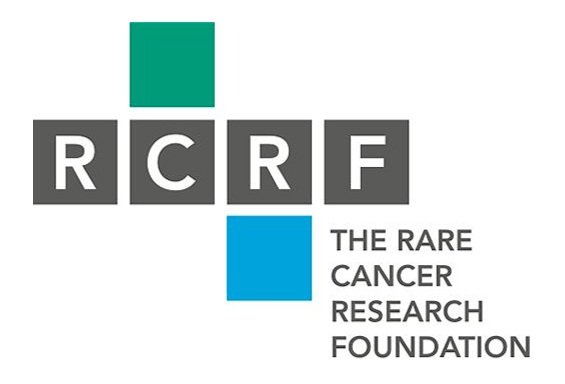From Sample to Breakthrough: Inside the Pattern Biobank
Photo credit: UV Solutions
By: Tracy Ikola, Volunteer
At the Rare Cancer Research Foundation (RCRF), innovation is not just a mission…it is a lifeline for patients diagnosed with rare cancers, where treatment options are limited and research is underfunded; every breakthrough counts. One of RCRF’s newest tools in driving discovery is the Pattern Biobank. This resource was built to accelerate research and create new possibilities for those who need them most.
The Pattern Biobank is more than a repository of clinical samples… it is a thoughtfully designed infrastructure that reduces redundancy across the research landscape, improves sample utilization, and advances drug discovery for cancers that are often overlooked. As Amber Smith, RCRF’s Biobank Director, explains, “Instead of individual foundations or institutions having to build their own biobank, we do it for them to save costs and provide a simplified solution to sample ownership and utilization. There’s no need to reinvent the wheel.”
The Biobank was born from the vision of RCRF’s founder, Mark Laabs, a rare cancer patient who saw a pressing need. Researchers struggled to access the clinical samples needed to study rare cancers. Pattern.org and other pattern initiatives such as the Biobank were built to address that challenge, creating systems and processes that make it easier to conduct meaningful research and speed up the pace of discovery. The use of the word “Pattern” is integral to these initiatives, as ultimately researchers are looking for patterns found in tissues and data in order to make discoveries to create new therapeutic options for patients.
Why Biobanking Matters for Rare Cancer Research
Rare cancers present unique obstacles. The scarcity of tumor models, limited access to tissue, and small patient populations often stall progress. At institutions, even when samples are collected, they may sit unused in freezers indefinitely, especially if only a small portion was used by the original research team.
The Pattern Biobank was created to change that as each donation is processed in a way that allows it to be divided and distributed across multiple studies and institutions. This ensures every sample reaches its full research potential and is shared for maximum impact.
“One of our goals is to make sure donated samples don’t go to waste,” Smith said. “We can take one tumor and process it into smaller pieces that are used in different ways. For rare cancers, where every sample is incredibly valuable, this matters. We also have the capability to viably cryopreserve tissue so that samples can be used to create models such as cell lines and organoids.”
The result is a living network of shared resources. Researchers gain access not only to high-quality biospecimens but also to associated rich, de-identified clinical data that brings context and clarity to their work.
This access opens the door to creating new research models and studying rare cancers in ways that were previously impossible. In an environment where time and tissue are both precious, the Pattern Biobank helps ensure neither is wasted.
Patient Participation: A Legacy of Hope
For patients and families, contributing tissue is a powerful act of hope. It offers a way to make meaning from uncertainty and leave a lasting impact on the future of rare cancer care. Smith noted that since the Pattern Biobank is still relatively new, many patients are not yet aware of this option. Expanding awareness is one of her top priorities.
“We want patients to know their sample isn’t just sitting in a freezer somewhere. We’re using it wisely, sharing it across multiple research efforts, and protecting their information every step of the way.”
All samples are collected under IRB-approved research protocols. From the start, each sample is labeled with a unique barcode and de-identified to protect personal information. Researchers never see patient names or identifiable data. The Biobank adheres to strict chain-of-custody procedures, meticulously documenting each movement and ensuring that samples are handled with the highest ethical standards.
Smith emphasized the importance of trust and transparency in this work. Every patient is contributing something deeply personal, and the Biobank team honors that responsibility with great care.
A Commitment to Collaboration and Progress
At its core, the Rare Cancer Research Foundation believes in the power of collaboration. The Pattern Biobank reflects that belief by serving both institutions and individual researchers. It supports patient-specific studies, helps reduce the burden on overextended research teams, and shares its infrastructure to make progress more efficient and scalable.
This shared-resource model promotes cooperation rather than competition, enabling researchers to access what they need without duplicating effort or infrastructure. By streamlining access to samples and support systems, the Biobank helps accelerate the work being done across the rare cancer research community.
The Biobank also reduces redundancy across the research space, allowing institutions to rely on shared systems rather than building isolated ones. This collective approach is what enables RCRF to grow its impact at scale.
Looking Ahead
The Pattern Biobank is a powerful example of what is possible when patients, families, and researchers collaborate with a shared goal. It transforms personal generosity into research momentum, bringing progress within reach for those facing rare cancer diagnoses.
Through the dedication of its founders, the care of its team, and the courage of its donors, Pattern is not just preserving samples. It is preserving hope.
To learn more about the Pattern Biobank and how you can get involved, visit rarecancer.org/biobank

